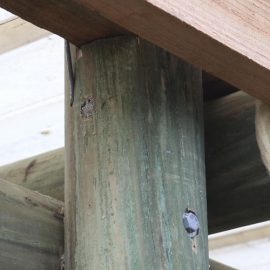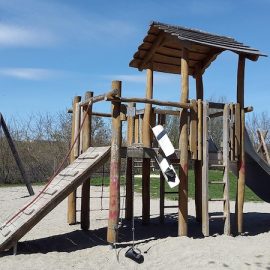
When you’re building a barn, or any other pole-based structure — be it for storing machinery, housing livestock, or creating a multi-use rural space — the end result is only as strong as the poles that support it.
The Pole Man has seen first-hand how investing in high-quality poles makes all the difference in barn construction.
Here’s what every builder, farmer, or landowner should know before breaking ground.
1. Poles are the backbone of your barn
Pole barns get their name for a reason: The poles carry the load of the structure. They support the roof, bear the bracing, and form the foundation.
If the poles are weak, inconsistent, or prone to movement, the entire building suffers:
- Rooflines sag
- Walls twist over time
- Foundations shift and stress the structure
Strong, straight poles = a barn that lasts.
2. Lathe-turned poles offer superior strength and consistency
Not all poles are suitable for barn construction. Here’s why lathe-turned poles from The Pole Man stand above the rest:
- Uniform diameter for consistent load bearing
- Straightened during turning, which improves stability
- No tapering or irregularities such as those seen with conventionally peeled logs with a LED (Large End Diameter) and a SED (Small End Diameter).
This means easier framing, better bracing, and fewer adjustments during the build, saving time and money on-site.
3. Proper treatment is non-negotiable
Barns are exposed to weather, animals, moisture, and earth contact. Your poles need to be ready for it.
We recommend H5-treated poles for all barn structures because they are:
- Designed for in-ground use
- Resistant to rot, fungal decay, and borer
- Treated deep into the timber core (especially on lathe-turned poles)
Cheaper, untreated or poorly treated poles might save you upfront, but could cost you the whole barn down the line.
4. Get the right size for your design
Barns vary — from open sheds to enclosed gable-roofed structures — so your pole size needs to match your load requirements.
General pole selection guidelines:
- Taller barns = thicker, longer poles (200–250mm diameter, up to 6m+ in length)
- Wind zones require extra anchoring and deeper footings
- Talk to your builder or engineer about spacing and load specs
At The Pole Man, we cut to your exact specifications, so you get the right pole, the first time. (Be wary of odd diameters supplied by engineers as, yes, they can be produced, but at a one-off cost that some design engineers don’t consider).
It pays to remember that a 200mm diameter pole that is otherwise the same as a 150mm diameter pole is over three times stronger (in bending strength) even though there is only a 33% increase in diameter. A 250mm diameter pole is 2.4 times stronger than a 200mm pole, considering it is 25% larger in diameter.
Better poles make for faster builds
Builders love our poles because they:
- Drop straight into post holes
- Are easier to brace and align
- Make the entire frame straighter and more stable
This doesn’t just speed up the job, it improves the final result. Strong, square framing makes everything that follows (roofing, cladding, doors) more precise.
Build it once. Build it right.
A barn isn’t just a building, it’s an investment in your land, your work, and your future. Whether you’re constructing a shed for hay or a premium stable block, the quality of your poles sets the tone for the entire build.
The Pole Man provides:
✅ Lathe-turned poles
✅ H5 treatment
✅ Custom sizes
✅ Reliable supply and fast turnaround
Need advice or a custom quote? Get in touch with The Pole Man and build your barn on a rock-solid foundation.
The Pole Man is Don Scott — a one-man band who loves the job and a project. He has been lathe turning poles for more than 20 years. He bought his big lathe because he wasn’t happy using peeled poles for a five-bay implement shed on his own farm, and he hasn’t stopped.
The most important thing is, of course, the price, and it’s worth comparing The Pole Man’s prices because they are amazingly competitive and are a far better product than conventionally peeled poles.


